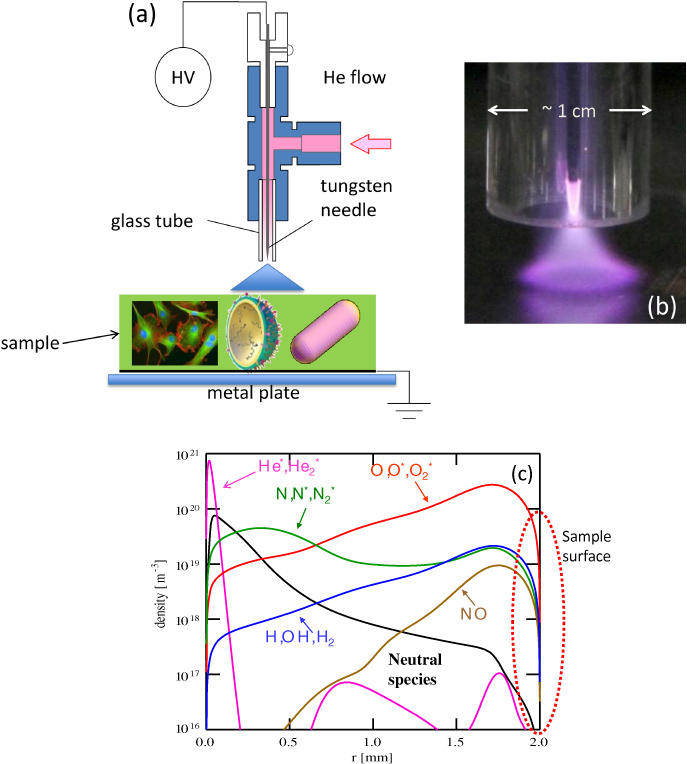Our research interests center around the science and applications of non-equilibrium, or 'low temperature,' ionized gas plasma. Non-equilibrium plasma (NEP) is a weakly to partially ionized gas in which not all species are at local thermal equilibrium. In particular, electrons are generally much hotter than neutral or ionic species. Other forms of non-equilibrium are common as well, and these features make NEP a remarkably powerful and versatile environment for applications ranging from semiconductor and quantum device nanofabrication under low pressure conditions to biomedical and chemical processing applications at atmospheric pressure. The large range of technological applications and associated scientific approaches requires developing collaborations with colleagues in associated fields, such as materials and surface science, device physics, biochemistry, medicine or agriculture.
DOI 10.1088/1361-6463/aa76f5
Plasma applications in semiconductor and quantum device nanofabrication
Plasma is used in nearly half of the 400-950 steps used to manufacture semiconductor integrated circuits, or 'chips,' primarily via thin film etching or deposition. These plasmas are highly chemically and physically complex, with electrons, ions, photons and reactive radicals all interacting with each other and the plasma chamber walls and substrate (e.g. silicon wafer). Plasma technology is challenged by the need to control device critical dimensions to nanometer and even sub-nanometer scales. Thin film deposition and etching processes often need to occur at one or at most a few atomic layers at a time. Plasma properties need to be nearly perfectly uniform across 300 mm diameter wafers in order to meet stringent processing demands. Plasma-generated particles and other contamination must be kept to an absolute minimum. The challenges are especially stark in the emerging field of quantum device fabrication. For example, the key problem of 'decoherence' of the quantum bits (qubits) results from plasma-induced near-surface damage and defects. Research in this field focuses on development and application of the most advanced plasma models and large scale computing, coupled with plasma and surface instrumental diagnostics. Machine learning and advanced process control are also being developed and applied.
Plasma infection control and biomedical applications
NEP has been shown over the last 10-15 years to be capable of selectively disinfecting both inanimate surfaces as well as living tissue. Other biomedical applications, ranging from wound healing to cancer treatment to dental and cosmetic treatments have been demonstrated on animal models and even in human clinical trials. It is known that plasma operated in air at atmospheric pressure creates many of the same 'reactive oxygen and nitrogen' species (e.g. nitric oxide and hydrogen peroxide) that natural immune systems use for many of the same purposes. Just as in materials processing applications, mechanisms involve complex, probably synergistic coupling between multiple physical and chemical effects, but now coupled with active biological responses, including of the immune system. Research in this field involves plasma modeling and diagnostics as well as studies of plasma-aqueous liquid interactions in a biochemical, biomolecular or biomedical context. Machine learning and advanced control are also important in this set of applications.

DOI 10.1088/0022-3727/45/26/263001
Plasma applications in chemical processing
There is an accelerating worldwide trend towards electrifying all aspects of modern technology, moving away from emissions of CO2 and other greenhouse gases associated with fossil fuels. Although in its early stages, there is promise in exploring gas plasma as a means to use electrical energy directly to provide process heat and to induce chemical transformation. The steadily dropping cost of renewably generated electricity suggests that relatively electricity-intensive plasma technology could help electrify industrial-scale chemical processing. Improving gas plasma chemical selectivity by coupling plasma with heterogeneous catalysis is an important direction for this research.
